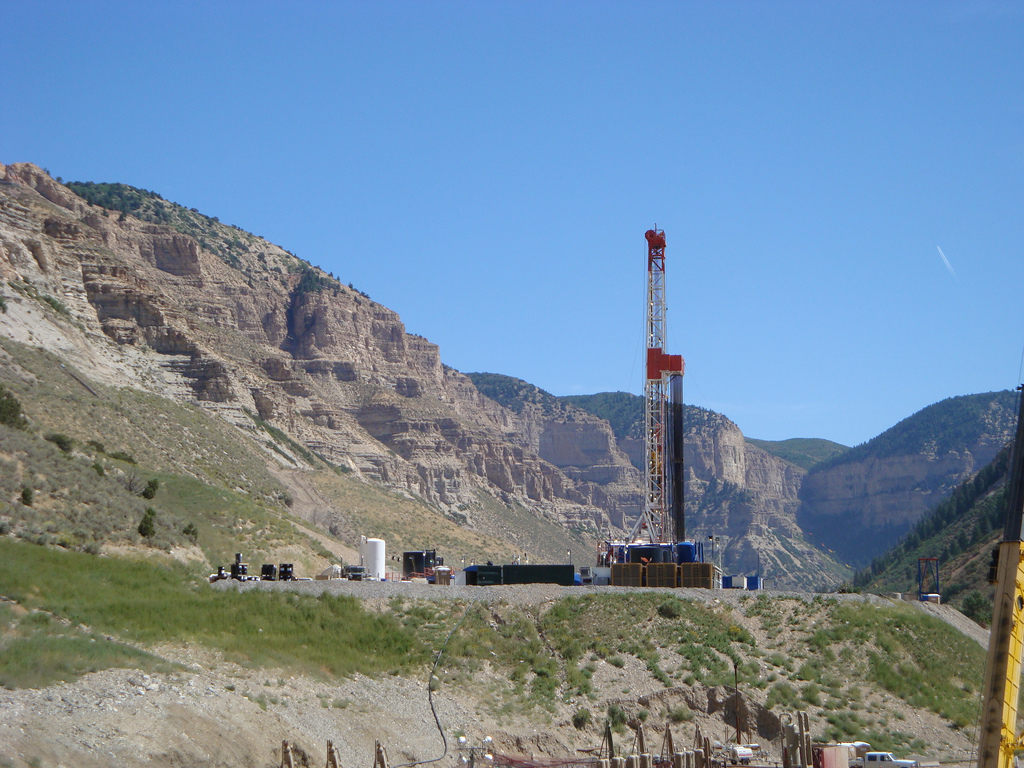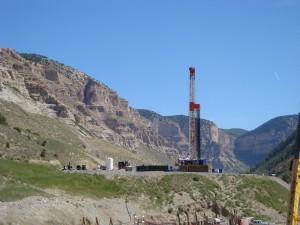
Competition Between Gas and Coal Changing Energy Landscape
On Wednesday, the PBS Newshour put out a great segment on the coal and natural gas industries in Colorado. As PBS’ Ray Suarez noted, for decades coal has been king: a low-cost approach of generating baseload electricity using a fuel source that is abundant across the United States. However, times are changing…and quickly.
Innovations in hydraulic fracturing and horizontal drilling have unlocked vast sources of low-cost natural gas. Prices have plummeted as a result, as the country is awash in gas. As I’ve noted before, this is killing the coal industry. In April, for the first time ever, electricity generated from natural gas equaled that of coal, both generating an estimated 32% of U.S. electricity. This demonstrated a precipitous decline for the coal industry – literally in the last year or so.
Since electric power plants around the country are burning more natural gas instead of coal, what does that mean for greenhouse gas emissions and air pollution? As ASP described in a recently released fact sheet, in the short-term there is a big environmental dividend that we are cashing in on from fuel switching. From the fact sheet:
Energy production from natural gas is cleaner and more efficient than production from coal: carbon dioxide emissions from coal (0.9 tonnes/MWh) are roughly twice those of natural gas (0.4 tonnes/MWh)
As a result of fuel switching from coal to natural gas, U.S. greenhouse gas emissions declined by 1.7% from 2010 to 2011, the fastest reduction out of all industrialized nations. This occurred while the economy was still growing. Also, PBS noted that climate change concerns aside, natural gas also emits less air pollution – less carbon monoxide, sulfur dioxide, particulates and toxic mercury emissions. This will result in improved public health for the American people.
However, as ASP’s fact sheet cautions, the climate and air pollution bonus achieved by burning more natural gas instead of coal doesn’t solve all of our problems. Natural gas still emits methane, a greenhouse gas over 20 times as potent as carbon dioxide. While better than coal, natural gas will not be a panacea. Again, from the fact sheet:
If all of the world’s coal-fired plants were replaced by zero-emission renewable generators, increases in the global mean surface temperature would be reduced 57-81% in a century, given current electricity demand. On the other hand, if all coal-fired plants were replaced by gas plants, global mean surface temperature would only be reduced 17-25% in a century.
So, in short, natural gas gets us half of the way there. It can be a bridge fuel.
Realistically though, natural gas will not displace all coal plants in the near future. Likewise, low natural gas prices are also slowing the expansion of renewable energy. While we are getting a short-term benefit from fuel switching, natural gas won’t be the answer. Ultimately, we will need to transition to a carbon-free energy economy over the long-term.
In the meantime, market forces are ruling the day. Coal is losing out to natural gas across the country, and PBS’s segment is a great example of that competition unfolding in Colorado.
Watch the PBS segment below:
Watch Coal-Powered Colorado Undergoing a Natural Gas ‘Revolution’ on PBS. See more from PBS NewsHour.
To read ASP’s fact sheet on the role of natural gas in meeting climate targets, click here.







Awesome! Its truly awesome piece of writing, I have got
much clear idea concerning from this post.
[…] prices for natural gas have caused utilities to undergo a rapid shift from coal to natural gas in the electric power sector. This has led to lower carbon emissions, […]
[…] coal production has been in decline. This is due to market factors such as the lowered costs of natural gas and recent environmental […]
[…] $2-$3 per million Btu. These low natural gas prices are undercutting coal, as ASP has written about extensively in previous months. The Energy Information Administration expects natural gas prices to stay below […]